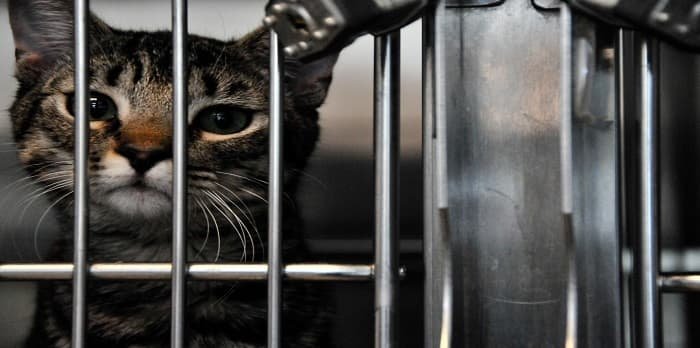LAFAYETTE, LOUISIANA – Four out of every five cats that wind up at the Lafayette Animal Control Center’s shelter never make it out alive.
In all, the shelter euthanized 1,764 felines last year, some because of illness or temperament but many simply because there is not enough space to keep them and there are not enough families willing to take them home.
Dogs didn’t fare much better — nearly 1,000 were euthanized last year, about half of the dogs in total taken in by the shelter.
“I was surprised at the number of animals we put down each year,” said City-Parish Mayor-President Joel Robideaux, who took office last month. “It just seemed like a number that didn’t fit with everything else about Lafayette.”
As one of his first initiatives, Robideaux has announced a push to turn things around, plotting a course to become a “no-kill” shelter within the next four years.
“No kill” doesn’t mean the shelter will no longer euthanize cats and dogs, but it describes generally a policy of killing only terminally ill or dangerous animals.
It involves heightened efforts to re-home animals, assistance to pet owners who might feel so overwhelmed they give up their animals and a robust spay and neuter program.
“It’s not a big capital-intensive project,” Robideaux said. “It’s just a mindset that we can do better.”
City-parish government will receive help from national animal-welfare group called Target Zero, which offers communities an intensive assessment of current shelter operations and, in many cases, three years of continued assistance in training and monitoring.
Target Zero Program Director Sara Pizano said her group will visit Lafayette from Feb. 22 to Feb. 25 to review shelter operations and make some recommendations.
She said one critical issue is finding a way to reduce the number of pets given up to the shelter by people who want to keep their animals but need some help, such as animal behavior training and low-cost veterinary care and food.
Another common strategy is to focus heavily on spay and neuter programs which successfully control pet populations, offering subsidized services to low-income pet owners and developing a policy of spaying and neutering unclaimed cats and releasing them rather than keeping the animals at the shelter.
“They’re doing fine out there by themselves, except they are reproducing,” Pizano said.
If the cats stay in the shelter, they will almost surely be euthanized, because there is limited space to keep them.
Lafayette’s shelter took in about 2,063 cats last year, and the facility has only 62 cat kennels, said Animal Control supervisor Virginia Lee.
For dogs, the situation is only a slightly bit better.
The shelter has 85 dog kennels, but it took in about 1,917 canines last year, Lee said.
One issue to consider is the actual size of the shelter.
City-parish officials have acknowledged the current 6,000-square-foot facility is too small, and planning has begun to build a new 20,000-square-foot shelter.
But Robideaux said even with a new shelter, policy changes are definitely needed to bring down euthanasia rates, and he is hopeful animal lovers will step up for the prolonged commitment needed to make the transition to “no kill.”
“There is a passionate group of volunteers that will make this happen,” he said.










